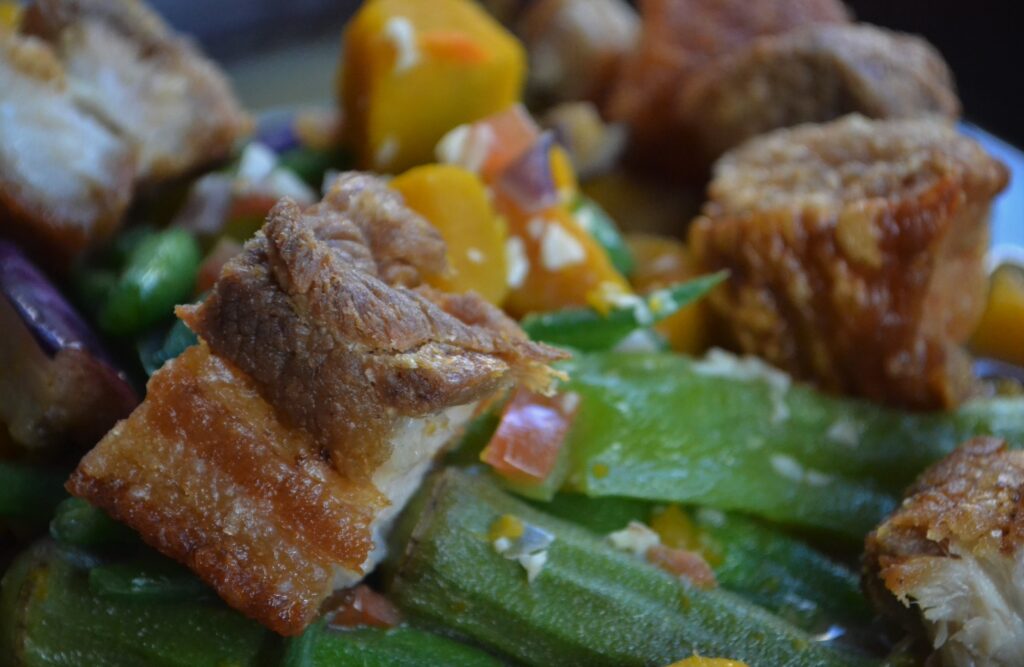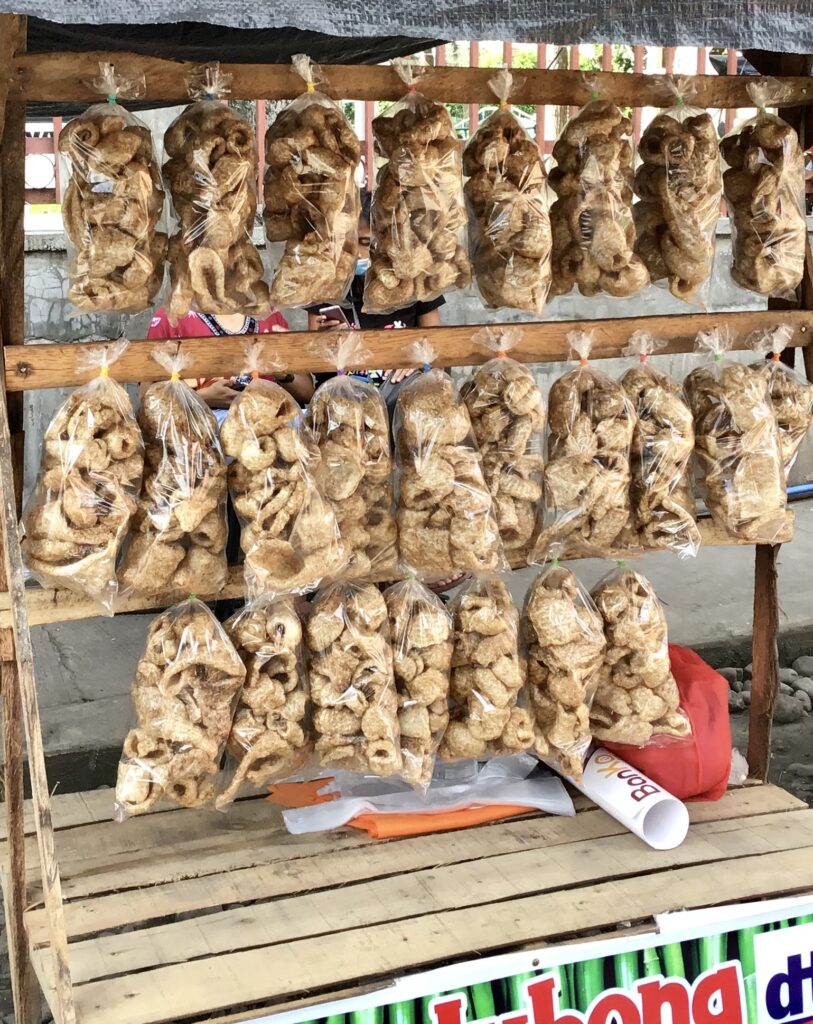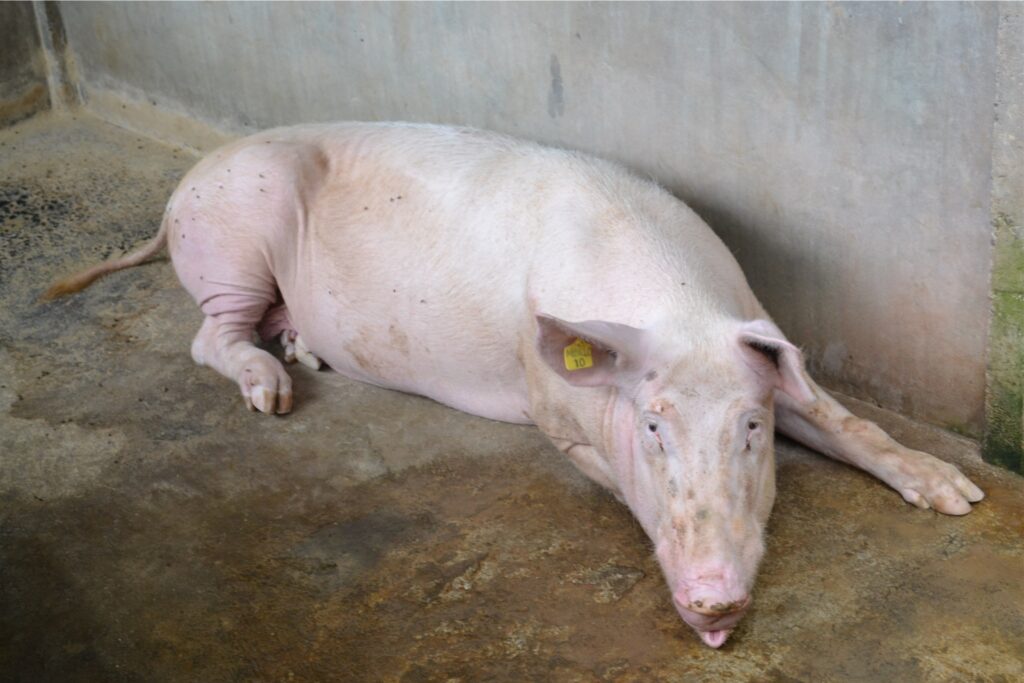Text and Photos by Henrylito D. Tacio
Swine, hog, or pig – that’s how they are called. Unearthed archaeological evidence showed that pigs were domesticated from wild boar as early as 13,000–12,700 BC in the Near East in the Tigris Basin; they were managed in the wild in a way similar to the way they are managed by some modern New Guineans. Remains of pigs have been dated to earlier than 11,400 BC in Cyprus.
What most Filipinos don’t know is that swine production is a staggering P191-billion industry. In fact, it ranks next to rice with an 18.28% contribution to the total value of agricultural production, according to the Philippine Council for Agriculture, Aquatic and Natural Resources Research and Development (PCAARRD), a line agency of the Department of Science and Technology.
“Swine production plays a major role in ensuring the country’s food security by providing about 60% of the total animal meat consumption of Filipinos,” the Laguna-based PCAARRD said, adding that in terms of volume of pork production and the number of breeding sows, the Philippines ranks eighth in the world.
It is understandable. After all, pork – the culinary name for meat from the domestic pig – is one of Filipinos’ most commonly consumed meats. It is eaten both freshly cooked and preserved. Curing extends the shelf life of pork products. Hams, smoked pork, gammon, bacon, and sausage are examples of preserved pork.

Lechon kawali 
Made of Pork 
Crispy pork skin
In rural provinces, “lechon” (roasted pig) is a popular tradition shared to celebrate important occasions (like fiestas, Christmas, weddings, and parties) and to form bonding, especially during birthdays.
A report from the Organization for Economic Cooperation and Development said that an average Filipino consumes about 14.2 kilograms of pork – that’s 2 kilograms more than the world’s average pork consumption.
In the Holy Bible, eating pork was prohibited in the Old Testament. But in the New Testament, some scholars said that it is no longer forbidden. What is sinful are those that come out from the mouth.
But whether eating pork is verboten or not, Filipinos have been eating meat since time immemorial. “The Philippines, before it was even called the Philippines, has always favored pork,” wrote Gela Velasco, author of an article, “The History of Meat in the Philippines: Why Our Markets Carry Chicken, Beef and Pork but Not Horse or Crocodile.” “Pig meat was often raised as offerings to the gods to curry their favor. Pigs are also considered indigenous to our lands, with the Tagalog word ‘baboy’ also having variations in the Indonesian ‘babi’ and ‘bawi’ in Malayan. The existence of these similar words in neighboring countries is important because they confirm that pig was a pre-colonial food source in Southeast Asia.”
About 71% of the swine population are raised in backyard farms, while 29% are in commercial farms. According to Jethro P. Adang, the director of the Davao-based Mindanao Baptist Rural Life Center (MBRLC) Foundation, swine raising is a very popular enterprise in almost every rural household in the Philippines, Inc.

After all, no other backyard animal has the same versatility as the swine. In the past, a farm family almost always invested their wealth in a pig. After all, out of pigs, you can get pork, bacon, and sausage. They also acted as a refuse bin, eating all the scraps and family’s leftovers. When asked if the head of the family has any money, the usual reply is: “I don’t have. All my money is in the pig.”
When people stopped raising pigs, they made a replica where they could “put their money in.” In time, the practice of saving money in a pig came into existence and was called a “piggy bank.”
Pigs are not only for eating. The by-products of pork have varied uses. For instance, Pigskin is used for the manufacture of shoes, razor strops, belts, and other leather goods. The inedible fat (excluding lard) is utilized to manufacture soaps, animal feeds, lubricants, leather dressing, candles, fertilizer, shaving cream, and chemicals.
Hair from hogs also has its uses when it comes to making toothbrushes, mattresses, and upholstery for furniture, cars, and passenger airplanes, air filters; baseball mitts; and parachute seat pads.
Several pharmaceutical products are made from swine glands. Physicians are known to use insulin, liver extract, and other medicines, made in whole or in part from hogs’ glands. They use these preparations to treat people afflicted with diabetes, anemia, and arthritis.
The collagen of connective tissues like sinew, lips, head, knuckles, feet, and bones is made into glue and gelatin. Gelatin is used in canning hams and other large cuts and baking, ice cream making, capsules for medicine, coating for pills, and photography.
As of April 2020, the Philippines Statistics Authority (PSA) reported that the total swine population was 12.71 million heads. This was 0.2% lower than the 12.73 headstocks registered in the same period in 2019. While the swine population in backyard farms decreased by 1.8%, the stocks in commercial farms registered an increase of 2.6%.
“Of the total swine inventory, 62.3% were raised in backyard farms while the remaining 37.7% were from commercial farms,” PSA said.
The decrease in raising swine in the backyard was probably due to African swine fever (ASF). But Filipino farmers who raise swine in their backyard said they would again raise swine once ASF is controlled.
“The strong growth in demand for pork has the potential to increase income opportunities and alleviate poverty among rural and agricultural households in the Philippines, where rural poverty remains high,” a position paper said.
The PCAARRD, the Department of Agriculture, and some non-governmental organizations are batting for raising swine. Among the advantages of raising this livestock include the following:
· From the standpoint of the efficient production of meat, pigs are superior to cattle, goats, or sheep when the feed they are eating is of high quality. However, when the feed is of lower quality, swine is not as efficient as ruminant livestock.
·Pigs are voracious eaters of crop by-products, offal of livestock and poultry, kitchen leftovers, restaurant refuse, and grain damaged by rain or fire. Pigs convert these efficiently into pork.
· Pigs of all classes, except young piglets, can tolerate all kinds of feeds, even (to some extent) low quality, highly fibrous foods. Pregnant sows can be fed with freshly cut forage or corn soilage mixed with a small amount of protein food concentrate to reduce cost while improving the sow’s reproductive efficiency.
· Pigs can produce two litters per year or as many as five litters in two years.
· Pigs can contribute a considerable amount of fertilizing manure to the soil. A mature pig can produce 600 to 700 kilograms of manure annually. The nitrogen content of fresh pig manure ranges from 0.55-0.6%; the phosphate content, 0.5%; and the potassium content, 0.4%.
But “despite being dynamic and technologically advanced, the local pig industry is still confronted with inefficiency of production due to low sow productivity, high mortality due to inefficient diagnostic tools, and lack of native pig genetic resource conservation, improvement and utilization initiative,” said the PCAARRD.

